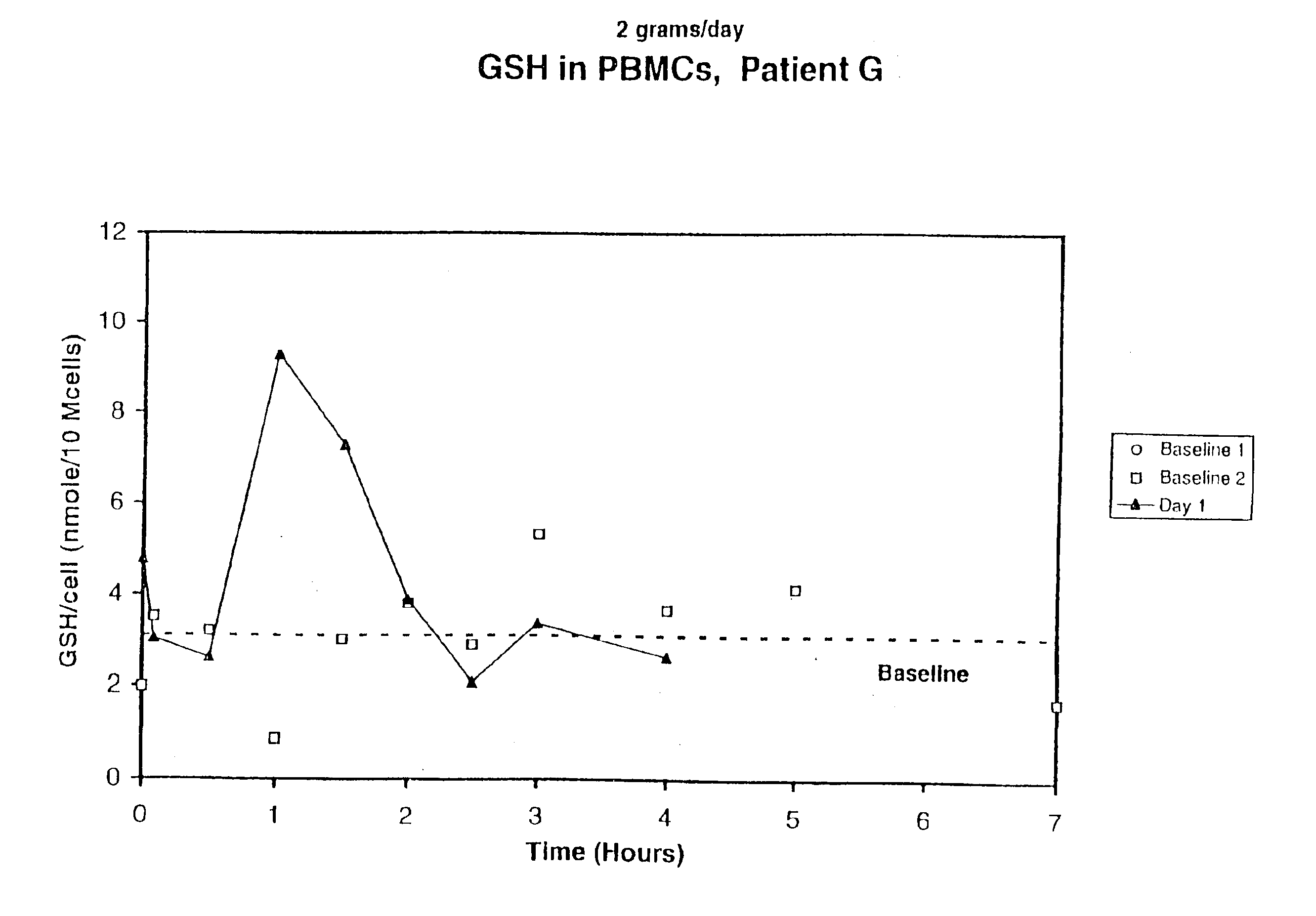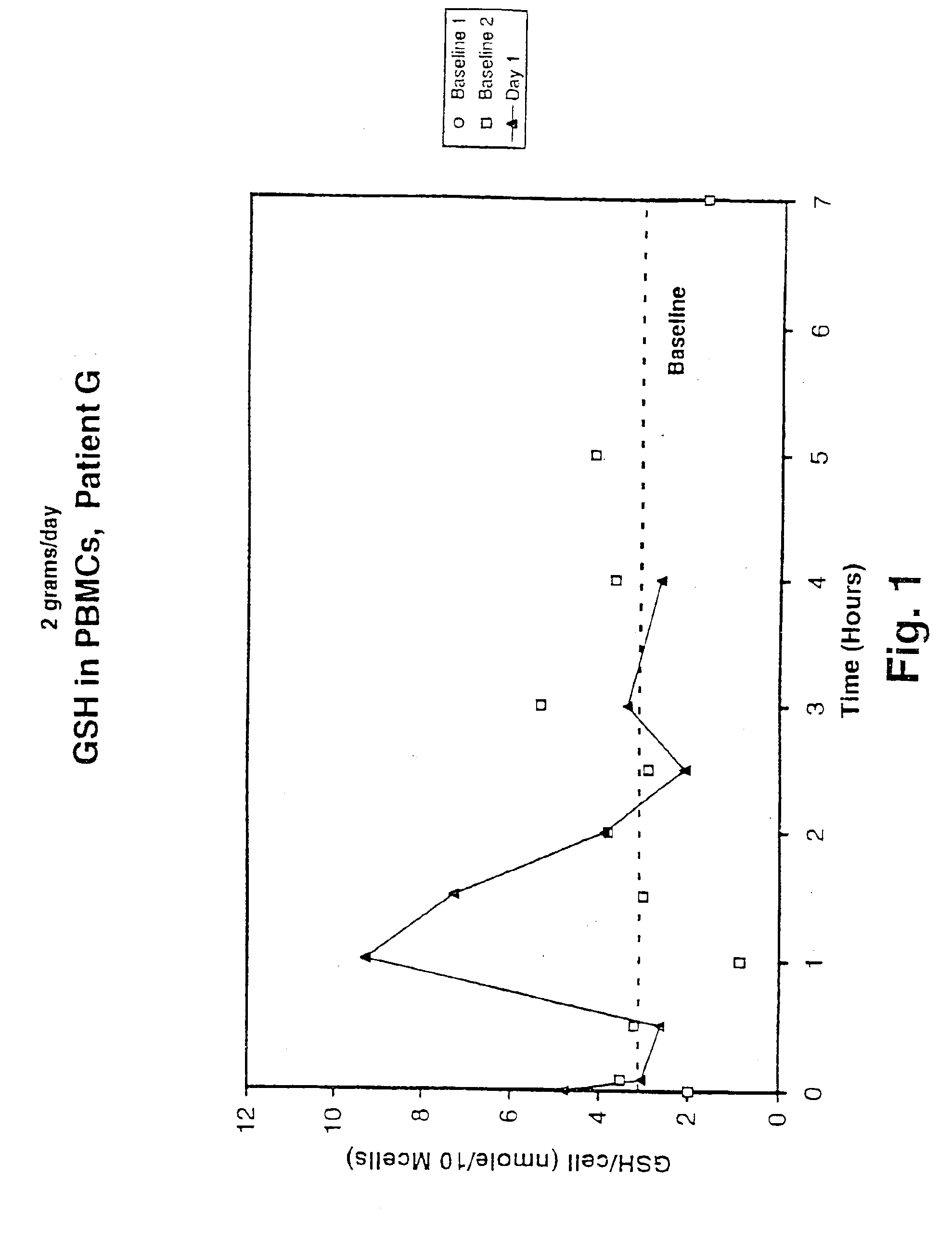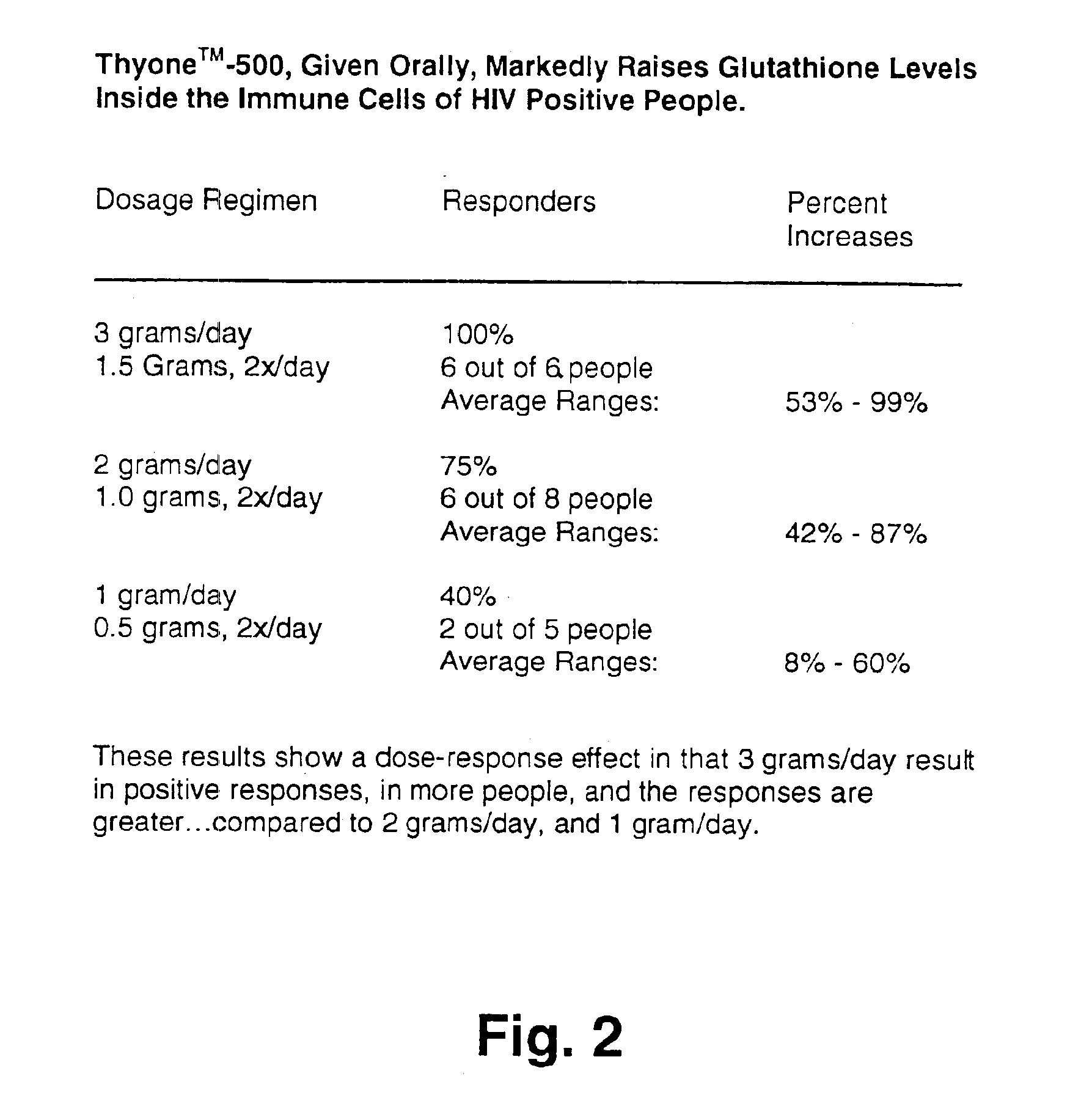A deficiency of glutathione in cells may lead to excess free radicals, which cause macromolecular breakdown,
lipid peroxidation, buildup of toxins, and ultimately
cell death.
However, under certain conditions, the normal, physiologic supplies of glutathione are insufficient, distribution inadequate or local oxidative demands too high to prevent cellular oxidation.
Under certain conditions, the production of and demand for glutathione are mismatched, leading to insufficient levels on an organismal level.
The protocols for administration of glutathione, however, were not optimized and therefore the
bioavailability of the glutathione was unassured and variable.
All prior pharmaceutical attempts by others to safely, effectively and predictably raise
intracellular GSH through
oral therapy with GSH have not met with demonstrated success.
Experts generally believe that beneficial physiological effects of orally administered glutathione are difficult or impossible to achieve, or the efficiency is so low as to make supplementation by this
route unproductive.
Because of the poor or variable results obtained, the art generally teaches that
oral administration of glutathione is ineffective, forcing administration or supplementation by other routes, principally intravenously, but also by alveolar
inhalation.
The ability to harness GSH, which is a powerful, but safe substance, into an effective oral pharmaceutical had not been accomplished in the past, because of molecular
instability, poor
gastrointestinal absorption through existing protocols and resulting inability to reliably effect increases in
intracellular GSH levels.
Glutathione is relatively unstable in alkaline or oxidative environments, and is not absorbed by the
stomach.
This protocol, however, has the effect of diluting the glutathione and delaying absorption.
Studies directed at determining the oral
bioavailability of glutathione under such circumstances showed poor absorption, and therefore such administration was seen as of little benefit.
Therefore, while oral dosage forms of glutathione were known, the clinical benefits of these formulations were unproved and, given the lack of
predictability of their effect, these formulations were not used for the treatment of specific conditions, nor proven to have effect.
Further, the known protocols for administration of glutathione did not provide convenience and high
bioavailability.
However, these are both more expensive than glutathione itself and have proven toxic.
Pure glutathione forms a flaky
powder which retains a static electrical charge, due to triboelectric effects, that makes
processing difficult.
Since glutathione is a
specific substrate for many reducing pathways, the loading of a host with
cysteine or NAC may result in less efficient utilization or recycling of glutathione.
Thus,
cysteine and NAC are not ideal GSH prodrugs.
Thus, while GSH may be degraded, transported as amino acids, and resynthesized in the
cell, there may also be circumstances where GSH is transported into cells without degradation; and in fact the administration of cysteine or cysteine precursors may interfere with this process.
These include HIV / AIDS, diabetes and
macular degeneration, all of which progress because of excessive free radical reactions and insufficient GSH.
For example, diabetes afflicts 8% of the United States
population and consumes nearly 15% of all United States healthcare costs.
GSH therefore interferes with the production of such oxidized proteins, and degrades them once formed.
The
virus, in addition to replicating, causes excessive production of various free radicals and various cytokines in toxic or elevated levels.
Eventually, after an average of 7-10 years, of seemingly quiescent HIV infection, the corrosive free radicals and the toxic levels of cytokines begin to cause symptoms, and failures in the
immune system begin.
It is this capability that makes it difficult to create a vaccine or to develop long-term anti-viral pharmaceutical treatments.
This is a particularly dangerous
pool of HIV and poses a considerable
threat.
This epidemic infection is out of control, and the widely popularized polypharmaceutical regimens that are aimed only at lowering the number of viruses are proving to be too complex, too toxic, too costly, and too narrow.
An additional cause of
erosion of GSH levels is the presence of numerous disulfide bonds (—S—S—) in
HIV proteins, such as the GP-120 discussed above.
This
disease obviously is not controllable with the present approaches and basically can not be curtailed in its spread merely by superficial
public health messages regarding safe sex and
clean needles, or by using overly complex, toxic, costly medications that are narrowly aimed at just
viral replication.
Vaccine development also continues, although prospects seem poor because HIV appears to be a moving target and seems to change as rapidly as a chameleon.
Thus, intercellular processes which artificially deplete GSH may lead to cell death, even if the process itself is not lethal.
The net result of this particular
glycation is a deficiency in the production of GSH in diabetics.
Brain cells,
heart cells, and others simply will not function well and can be destroyed through
apoptosis.
Because of the dependence on GSH as the carrier of
nitric oxide, a vasodilator responsible for control of vascular tone, the cardiovascular
system does not function well and eventually fails.
Since all epithelial cells seem to require GSH, the intestinal lining cells don't function properly and valuable micronutrients are lost,
nutrition is compromised, and microbes are given portals of entry to cause infections.
The use of GSH precursors cannot help to control the GSH deficiency due to the destruction of the rate-limiting
enzyme by
glycation.
The complications described below are essentially due to runaway free radical damage since the available GSH supplies in diabetics are insufficient.
The diabetic will become more susceptible to infections because the
immune system approaches collapse when GSH levels fall .
This bleeding causes damage to the
retina and kidneys with resulting
blindness and renal shutdown, the latter results in required
dialysis.
Ultimately, the destruction of the rods and cones leads to functional, legal
blindness.
Although cones, which detect color are lost as well in this
disease, it is believed to be loss of rods which causes the
blindness.
It is also known that RPE cells require large quantities of GSH for their proper functioning.
Additional free radical insults, like smoking, adds to the risk of developing ARMD.
Currently, there is no effective therapy to treat ARMD.
Selective
toxicity to the
kidney is the result of the
kidney's ability to accumulate intermediates formed by the
processing of S-conjugates in the proximal tubular cells, and to bioactivate these intermediates to toxic metabolites.
The administration of
morphine and related compounds to rats and mice results in a loss of up to approximately 50% of hepatic GSH.
Methylmercury is believed to exert its deleterious effects on cellular microtubules via oxidation of
tubulin sulfhydryls, and by alterations due to peroxidative injury.
GSH has an extremely
low toxicity, and oral LD50 measurements are difficult to perform due to the sheer
mass of GSH which has to be ingested by the animal in order to see any toxic effects.
GSH can be toxic, especially in cases of ascorbate deficiency, and these effects may be demonstrated in, for example, ascorbate deficient guinea pigs given 3.75 mmol / kg daily (1,152 mg / kg daily) in three divided doses, whereas in non-ascorbate deficient animals,
toxicity was not seen at this
dose, but were seen at double this
dose.
No evidence of toxicities from laboratory studies or from clinical examinations was reported; however, no benefit was conclusively demonstrated.
 Login to View More
Login to View More 


